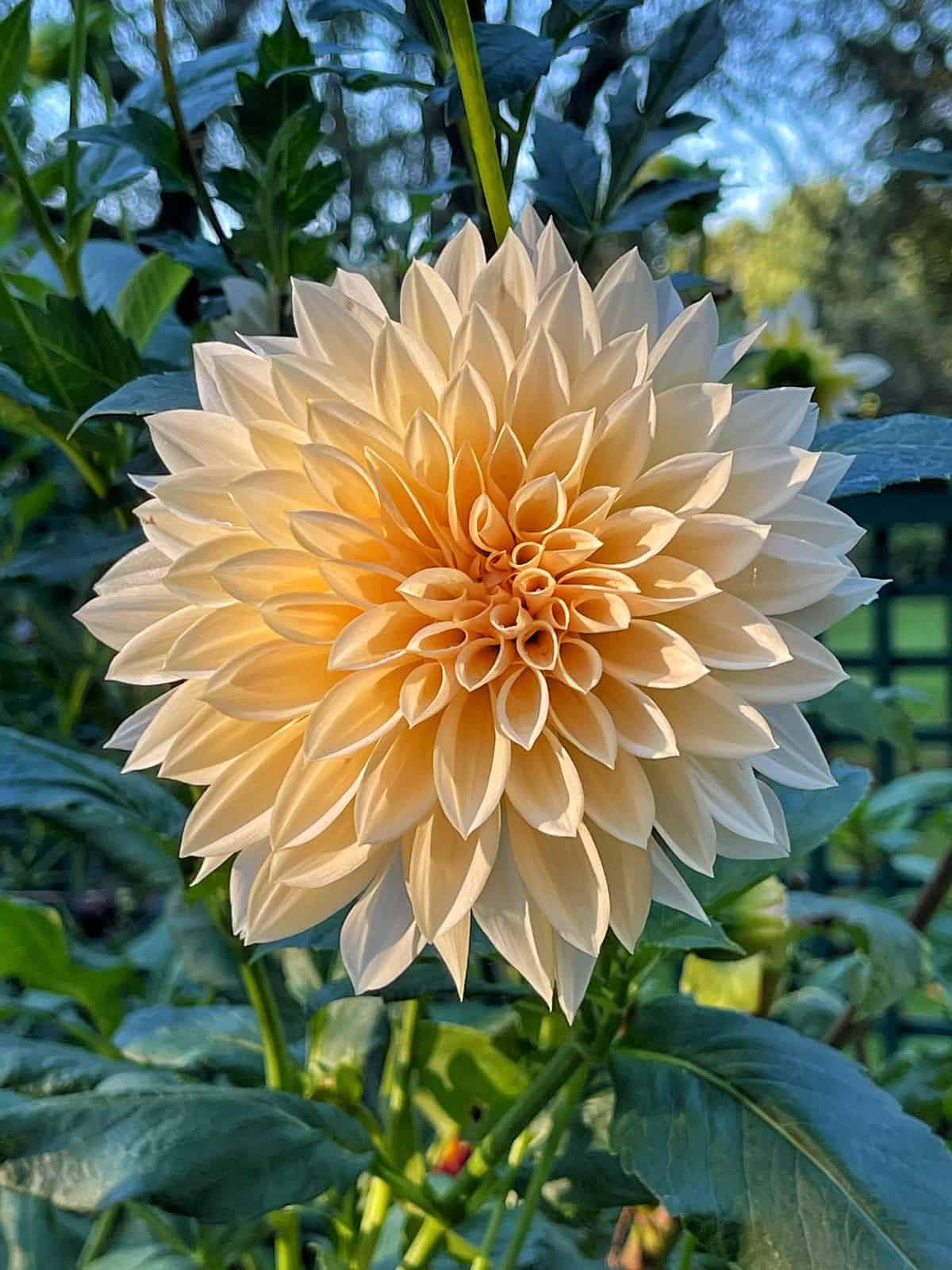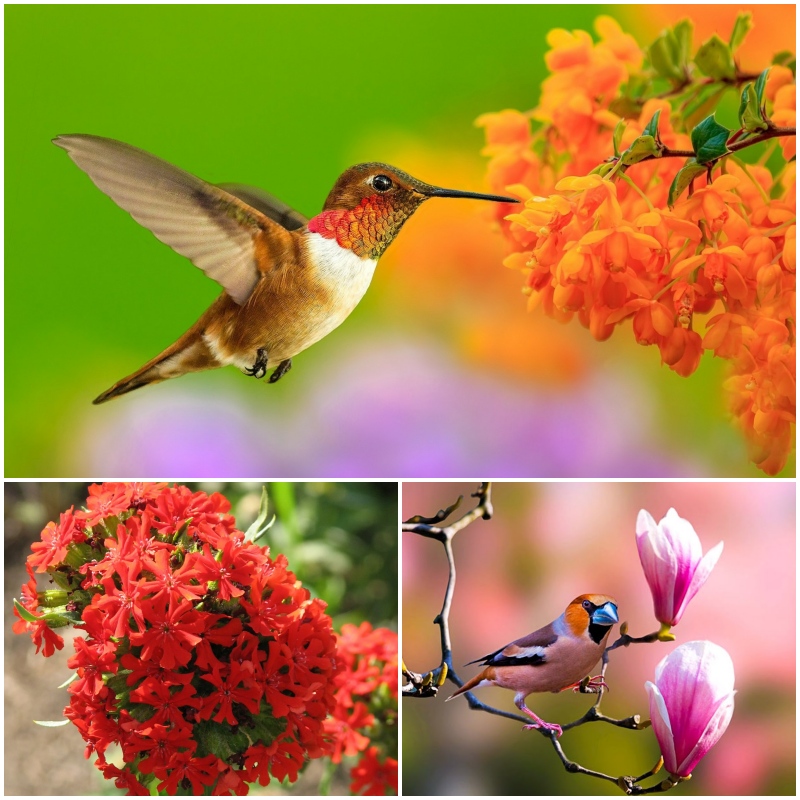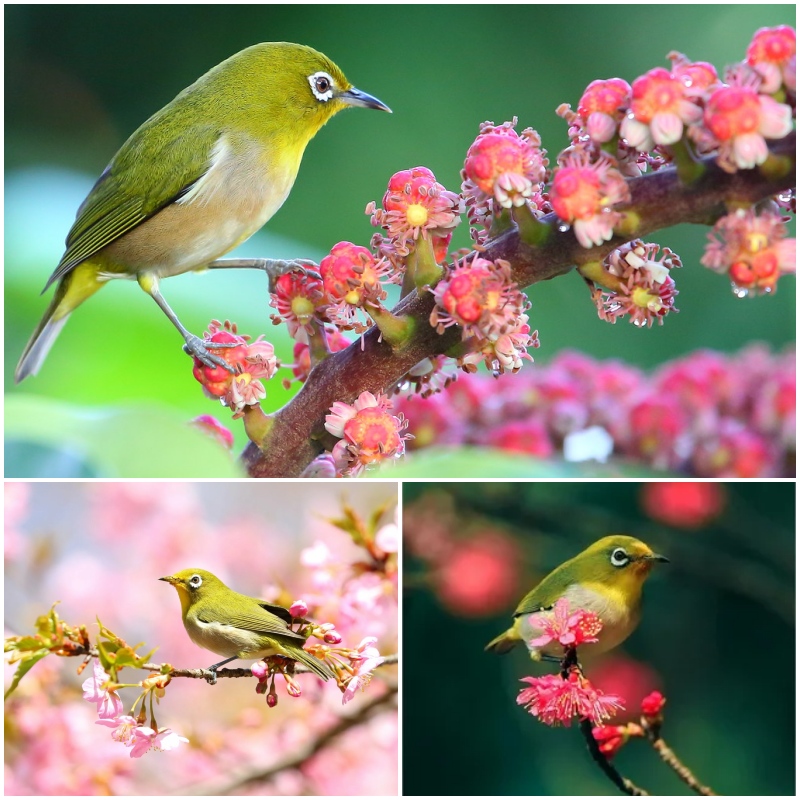Pro Tip: Self-watering containers are a game-changer for busy gardeners. These ingenious pots maintain consistent moisture levels, preventing underwatering (a dahlia’s nightmare!). Check out the Aquapots from Proven Winners. Keep an eye on self watering planters when there is excessive rain as dahlia tubers will rot if the pots hold too much moisture.
Where potting is concerned, not all dahlias are created equal. For an easy care approach to growing dahlias in pots, check out dwarf dahlia varieties that don’t need staking. Compact plants, like the ‘Duet’ series or the ‘My Love’ series, flourish in containers, reaching only 18-24 inches tall and smothered in blooms. If you go with a dwarf variety, a minimum of 12-15″ would be a great size to choose.
Last year, I grew Dalina Grande Cancun and Dalina Grande Mendoza which looked spectacular in the zen garden. I loved how the different shades of pink flowers looked against the stone wall.
While dwarf varieties are a great option, you can grow taller dahlia varieties too. Just choose a larger container size to accommodate the roots and height of the blooms. Choose no smaller than 15″ pot size to accommodate the tuber, root system, and eventual plant height.

My Favorite Dahlia Varieties That Grow Well in Pots
While I tend to grow more of my dahlias in the ground or my raised beds, I’ve grown a few in pots as well. Here are some of my favorites to try!
- Eveline
- Karma Lagoon
- Kogane Fubuki
- Edge of Joy
- Jowey Winnie
- Cafe Au Lait
- Thomas Edison
- Labrynth

Growing dahlias in pots is a popular option for gardeners who have limited space or want to add a burst of color to outdoor living spaces where planting in the ground is not feasible.
For best results, here’s what you need to know about planting dahlia tubers in containers.
- Choose a clean container with a diameter of at least 12 to 16 inches and a depth of at least 12 to 18 inches. Make sure the container has drainage holes to allow excess water to escape and prevent waterlogging.
- Use a well-draining potting mix. Feel free to add perlite, vermiculite, or sand to the potting mix to improve drainage.
- Plant one dahlia tuber per container, positioning it horizontally with the “eye” or bud facing up then cover the tuber with about 2 inches of potting mix.
- Maintain your containers in full sun with at least 6 hours of direct sunlight per day. Rotate them periodically to ensure even sunlight exposure on all sides of the plant.
- Remember that containers dry out faster than plants in the ground, so it’s important to water potted dahlias regularly. Check the soil moisture level with your finger or a moisture meter. Avoid overwatering and allow the top inch of soil to dry out slightly between watering.
- Fertilize dahlias with a balanced slow-release or water-soluble fertilizer formulated for flowering plants and follow the package instructions for application rates and frequency.
- Stake or cage plants to provide support as they grow, being careful not to damage the tubers or roots during the process.
- In colder climates, dahlias will need to be dug up and overwintered indoors if you want to enjoy the following season.
Planting Dahlias in Containers Before the Last Frost Date
If you want to get your dahlias going before the last frost date, you can pot them up and try to pre-sprout them for faster blooms much sooner. This is great for impatient gardeners like myself!
Simply place the tuber in a pot with damp potting mix, eye facing up, and keep it warm and well-lit. Once sprouts appear, harden them off outdoors before transplanting them into your container. Keep in mind that the soil should not be soaked or the tubers will rot. For that reason, I wouldn’t water them until they get outdoors.

Dahlias need full sun to grow, thrive, and bloom. This means they’ll need 6-8 hours of full sun to give you lots of continual blooms. So make sure you site your potted dahlias where they will receive that kind of light.
While dahlias love consistent moisture, avoid soggy soil, particularly in cooler temperatures. Water deeply when the top inch of soil feels dry, allowing excess water to drain freely. The frequency will depend on pot size, climate, and drainage.
Keep in mind that the quality of your soil will determine if and when to fertilize dahlia flowers. If you add a soil amendment like aged manure, fertilizer is not needed when you plant the tubers. However, if composted materials like pine bark, leaf mold, peat moss, or something similar are used, then add about 1/4 cup of balanced fertilizer per plant.
To fuel continuous blooms in pots, it’s important to feed them with a balanced fertilizer. I love using a slow-release fertilizer for a set-and-forget approach with a bloom booster to help my potted dahlias flower all season long.

Not all plants need support but many large dahlias need help so the weight of the flowers don’t cause it to fall over.
For those that require additional support, you can use:
- grow through support hoops
- tomato cages
- trellis netting
- Bamboo plant stakes
While I generally don’t like using bamboo plant stakes for my dahlias in the garden, they are fine to use in pots where you only have one tuber. Add the stake when you plant your tubers so you don’t risk piercing it later.
As your dahlias reach for the sky, staking becomes crucial. Use sturdy stakes made of bamboo or metal, taller than the expected height of your dahlia variety. Gently tie the dahlia stem to the stake using soft plant ties, allowing room for stem growth.

While your dahlias begin to grow, it’s important to pinch them back when they reach about a foot tall to encourage a bushier, branchier habit. This will help produce more flowers on your dahlias.
Removing spent blooms, known as deadheading, encourages your dahlia plant to produce even more flowers. Simply snip off the wilted flower head just above the next set of leaves with a pair of garden snips or sharp pruners. This redirects the plant’s energy towards producing new blooms, extending your floral display.
In addition to deadheading, cut your dahlia flowers to use in bouquets too as this encourages the plant to produce more flowers.
Since dahlia tubers take some time to sprout, grow, and bloom, your pots might look a bit boring for a while. Why not underplant your dahlias with some summer flowering annuals that will add interest and spill over the edges of your planters to pretty them up? Here are some planting ideas for your potted dahlias.
- Bacopa
- Lantana
- Sweet Alyssum
- Scaevola
- Calibrachoa
- Petunias
- Trailing snapdragons
- Lobelia
- Nasturtium
When planting them, make sure you don’t damage your dahlia tuber. Plant flowering annuals with lots of care around your dahlias!

Live in a frost-free zone? You can enjoy your dahlias for multiple seasons! After the first frost, carefully dig up the dahlia tuber and cut the stems back to a few inches. Brush off excess soil and store the tuber in a cool, dark, and frost-free location (like a garage or shed) in a breathable container filled with slightly damp potting mix. Come spring, you can then repot and start the growing cycle anew.
By following these tips, you’ll be well on your way to growing breathtaking dahlias in pots. Remember, consistent watering, regular feeding, and proper support are key ingredients for their success.
For more information about growing dahlias in pots, please check out:
- American Dahlias Society
- Penn State University

Have you ever grown dahlias in pots before? What varieties do you prefer to grow in them? I would love to know more in the comments below.
And don’t miss joining my Gardening DIY and Decorating Community on Facebook for more chatter. And follow along there and on Instagram as well. There are behind-the-scenes daily things that I share on Instagram that don’t make it to the blog. Would love to see you there too!
If you prefer to binge-watch Bricks ’n Blooms on TV, we go more in-depth with tours and posts on my YouTube channel. Would love to hang out with you there!
And… If you’re catching up on blog posts you may have missed, be sure to sign-up to get my newest posts via email to stay up to date with everything that’s happening here on the blog and more.

- I like to use a good-quality, potting soil, garden soil, compost, and perlite when planting. While I make my own compost, you can easily buy it ready-made for use.
- I have used this deer repellent with great success. But now, I’m all about this deer repellent that is systemic instead of topical. This means the plant takes it in as opposed to it just smelling bad.
- Hands down this is my favorite hand-weeding tool. You can use it to get underneath roots and loosen soil, and it cuts down on the weeding time because you work much faster.
- But I also love this long, stand-up weeding tool too.
- You’ll need a sharp set of pruners when pruning your dahlias. I buy a few so I can stash them around.
- But I use these garden snips to deadhead and cut their flowers.
- If necessary, I use this insecticidal soap or neem oil to help control infestations depending on the issue. When using, only apply when pollinators are less active.
- This is my go-to bait for slug and snail problems with my hostas and dahlias.
- This is my favorite set-and-forget slow-release fertilizer.
- I use these grow-through garden supports for peonies, dahlias, and other plants with top-heavy blooms because they work really well and keep the blooms upright.
- I use this collapsible bin ALL THE TIME when working in the beds because it’s light to carry around and folds flat for easy storage.
- Drip irrigation set on a timer is your friend! I love these for my planters, window boxes, and hanging baskets.






